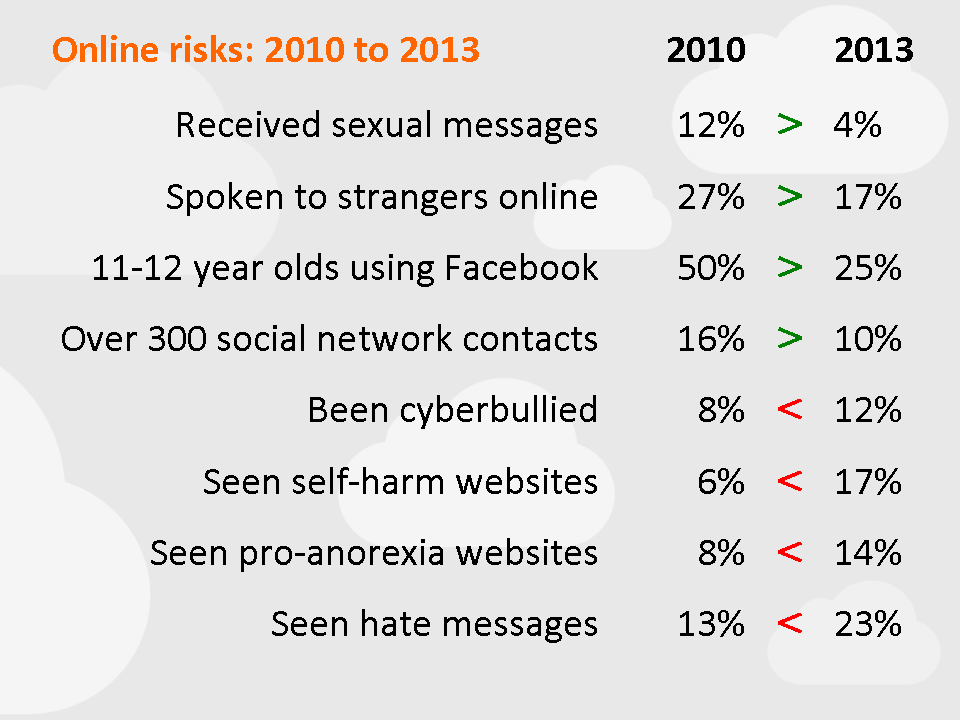Research from LSE shows that exposure to cyberbullying and harmful user-generated content is on the rise, while exposure to sexual messages has decreased, and young people are less likely to talk to strangers online or use social networking sites underage.
 LSE has today published the UK results of the recent Net Children Go Mobile research report, which shows current trends and the changes in children’s use of technology since the 2010 EU Kids Online UK report.
LSE has today published the UK results of the recent Net Children Go Mobile research report, which shows current trends and the changes in children’s use of technology since the 2010 EU Kids Online UK report.
Some risks are increasing
Research trends from 2010 to 2013 show that cyberbullying is now more common than face-to-face bullying. In 2010, 16% of children reported being bullied face to face, 8% on the internet and 5% via mobile phone. By 2013, this ratio had reversed, making cyberbullying (12%) more common than face-to-face bullying (9%).
Exposure to harmful user-generated content has also increased significantly, from 19% of 11-16 year olds in 2010, to 29% in 2013. In 2013, hate messages (23%) were the most common type of harmful UGC, followed by self-harm sites (17%) and pro-anorexia sites (14%). In 2010, only 13% reported exposure to hate messages, 6% to self-harm sites and 8% to pro-anorexia content.
However, it seems that some of the safety strategies are working
In 2013, 4% of UK children aged 11-16 report receiving sexual messages compared to 12% in 2010.
17% of children aged 9-16 said that have been in contact online with someone they hadn’t previously met offline, but just 3% of children said they had been to meet such a person face to face. This is a reduction from 2010, when 27% were in contact with people online that they hadn’t met face to face, and 5% had met such a person offline
While many children under 13 are still using social networks under age, this number has reduced since 2010. In 2013, Facebook was the main platform used by the youngest age band, with 18% of 9- to 10-year-olds and 25% of 11- to 12-year-olds having a profile. In 2010, 20% of 9-10s used Facebook, and 50% of 11-12s.
The results also show that fewer children have large numbers of social network contacts. Substantial numbers of children have relatively few online contacts, and the number of online contacts has dropped a little since 2010, when 16% reported more than 300 contacts (compared with 10% in 2013).
The next three years
It is important we continue to educate young people about staying safe online, particularly stepping up work around cyberbullying and access to harmful user-generated content, as well as continuing efforts in other areas to keep the trends moving in the right direction.


